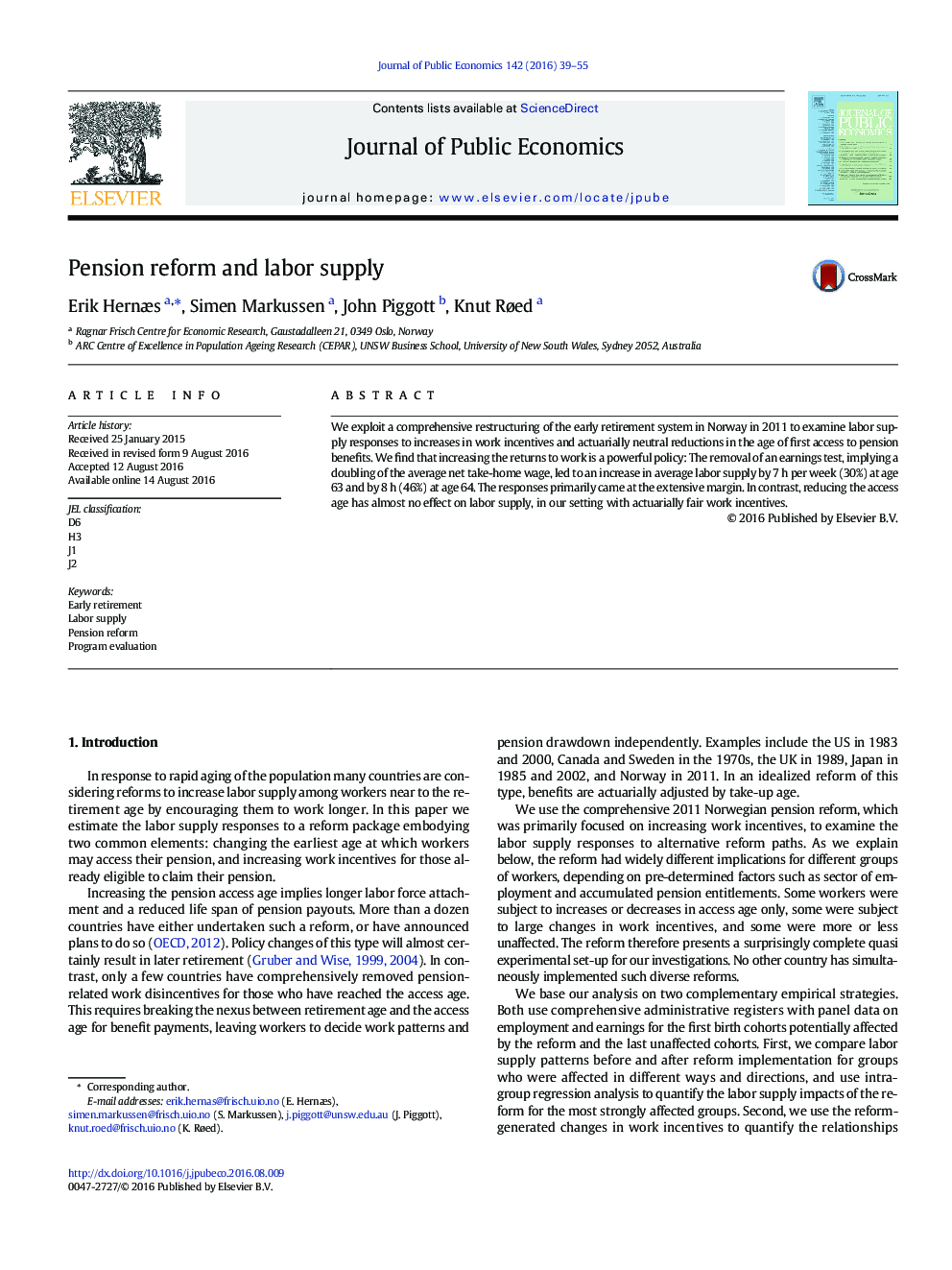| Article ID | Journal | Published Year | Pages | File Type |
|---|---|---|---|---|
| 969645 | Journal of Public Economics | 2016 | 17 Pages |
•A Norwegian pension reform in 2011 implied increased work incentives for the elderly.•The earnings test on pensions was removed, implying a doubling of the take-home wage.•Persons age 63-64 responded by increasing their labor supply by 30-40 percent.•Increased tax revenues paid for the removal of the earnings test.•Work incentives are much more important for labor supply than the pension access age.
We exploit a comprehensive restructuring of the early retirement system in Norway in 2011 to examine labor supply responses to increases in work incentives and actuarially neutral reductions in the age of first access to pension benefits. We find that increasing the returns to work is a powerful policy: The removal of an earnings test, implying a doubling of the average net take-home wage, led to an increase in average labor supply by 7 h per week (30%) at age 63 and by 8 h (46%) at age 64. The responses primarily came at the extensive margin. In contrast, reducing the access age has almost no effect on labor supply, in our setting with actuarially fair work incentives.
